There are several stages of tattoo healing, each of which has certain rules for caring for the damaged area of skin. To ensure that your body design remains an effective and beautiful decoration for a long time, you should not neglect the advice of a tattoo artist. Strict adherence to his recommendations is the main guarantee that you will not need correction. What should you know to avoid tattoo deformation and maintain its longevity?
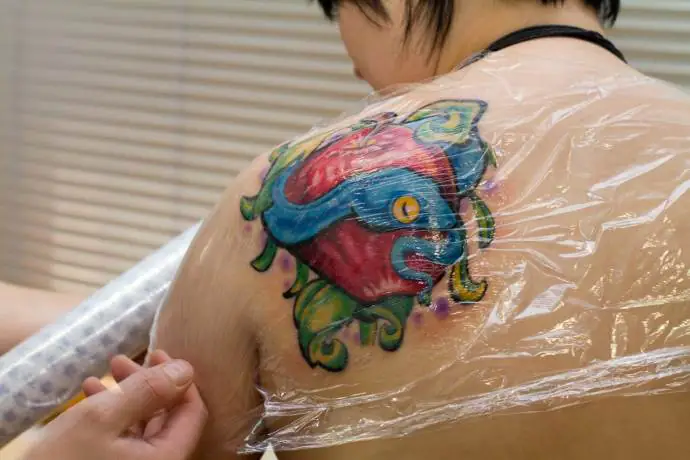
First stage
The quality of a tattoo depends half on proper care in the first days after the session. Applying a permanent pattern is a mechanical intervention in the human body, which cannot be painless and without leaving a trace. After the procedure, small microcracks remain on the body through which ichor is released. This begins the process of healing and cleansing the skin, which is launched by the lymphatic system.
At the first stage of healing, the area of the body with the tattoo swells and discharge appears in the form of a sticky liquid mixed with ink. Many people first of all think that the pattern simply spreads and washes off, but this is not so. This is a normal reaction of the body to such a procedure. Back in the salon, the tattooist treats the area of application with healing ointment and wraps it in protective film. It is not recommended to remove the film during the first 24 hours. At home, you need to take a warm (not hot!) shower, gently wash the wound with antibacterial soap and leave to dry. Under no circumstances should you rub the drawing with a washcloth or towel. After washing, apply a healing anti-inflammatory cream to the tattoo.
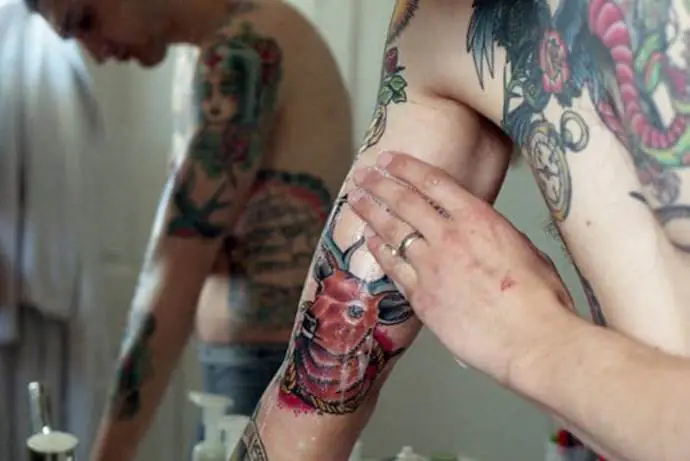
Second phase
On the second day of tattoo healing, the ichor disappears and the swelling goes away. At this stage, the skin tightens, becomes dry and dehydrated. Why is this happening? The fact is that ink is perceived by the body as a foreign body. It takes time for them to take root and not be rejected. During this period, the drawing should be actively treated with healing ointments. It is recommended to avoid body contact with clothing, as friction does not promote tattoo healing. If you need to go outside, it is advisable to wrap the application area with protective or regular cling film. At home, during the second stage of healing, it is better to leave the tattoo open to allow the skin to breathe.
Third stage
Usually on the third day a crust forms on the tattoo. The skin begins to peel off, white or colored flakes appear. The fact is that the ink remains in the lower layer, the dermis, and the epidermis, that is, the upper layer, is renewed and restored after the procedure. This reaction of the body provokes severe itching and discomfort. Under no circumstances should you scratch the tattoo or tear off the scab. This will significantly damage the drawing and increase the healing time. You can lightly pat your body with your palm and continue to treat the area with ointment. Sinaflan antiseptic solution will also help reduce itching. At this time, it is advisable not to visit the gym, solarium, limit time spent in the open sun and reduce physical activity. Don't be alarmed if the tattoo fades a little and loses its brightness. This will go away after complete healing.
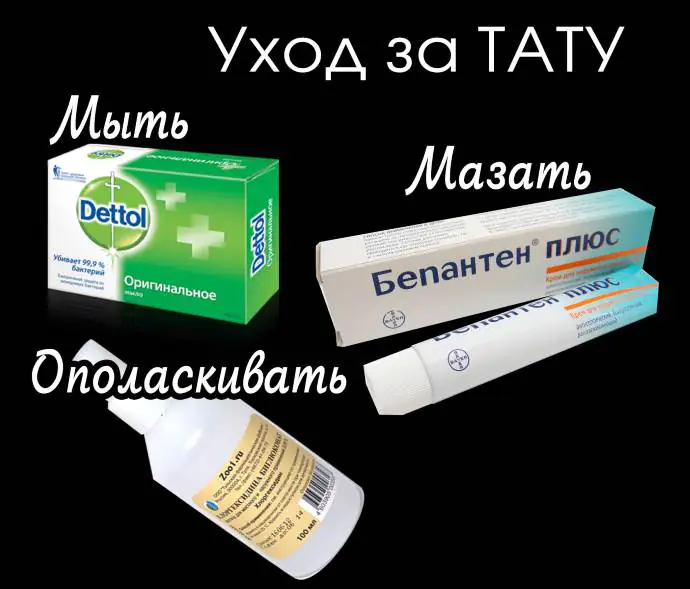
Healing time
The healing time of a tattoo varies from person to person and depends on the following factors.
Place of application
The buttocks, chest and abdomen heal the fastest. The recovery period takes from 4 to 7 days. Areas with a small amount of subcutaneous fat (back, ankle, neck) can take up to 2 weeks to heal.
Tattoo volume
Large tattoos are usually applied in several stages, so complete healing occurs within a month. This is especially true for portrait photos in the style of realism or blackwork tattoos, where a large amount of ink is used to completely shade the design. Small and medium tattoos recover faster because the body area is small.
Thickness and depth of lines
Thin, neat lines do not seriously injure the skin and are restored faster, deep, wide and thick lines take longer: 1-2 weeks.
You can determine whether a tattoo has healed by running your hand over it. If the pattern is uniform, without roughness or husks, the restoration process was successful.
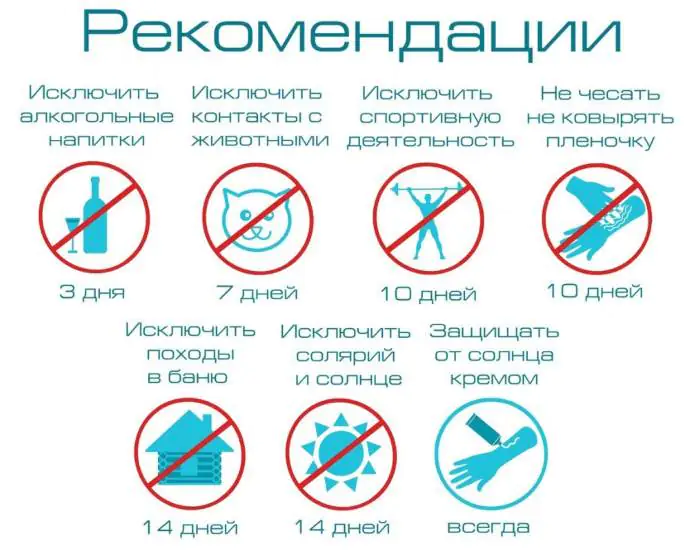
Healing ointments
After the session, the tattoo needs proper care. Upon completion of the work, the tattooist treats the application site with an anti-inflammatory ointment, which relieves swelling. Further, a similar procedure must be done at home to speed up the regeneration process. The most effective and recommended drugs include the following.
- Panthenol spray itself is a remedy for burns. It can be sprayed onto the tattoo up to 4 times a day. The drug relieves itching, moisturizes the skin and promotes rapid regeneration.
- Bepanten ointment has an anti-inflammatory effect, soothes and heals the skin. Unlike some other products, the ointment has no side effects and does not cause an allergic reaction. It must be applied as it is absorbed at any stage of tattoo healing. Before each application, it is necessary to wash the area of the body with a tattoo with antibacterial soap to wash off any remaining cream.
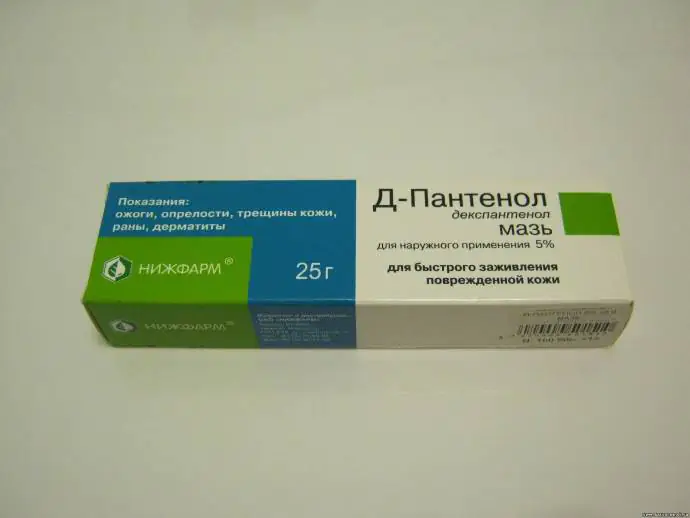
Remember that during the period of regeneration of the damaged area (that is, during all three stages listed above), you should completely abandon cosmetic hand creams and even baby cream. The fact is that they contain additives, fragrances and essential oils that do not promote healing, but, on the contrary, injure the skin.
Video about tattoo care

Agree, each of us wants our tattoo to always look as bright and clear as on the first day.
However, few people realize that half the responsibility for this result falls on the client - on his actions in caring for the fresh work. Recommendations on the Internet vary from “do nothing, it will heal on its own” to “apply cream every two hours, even at night, and constantly rinse with miramistin.” Let's figure out what truly proper healing should look like.
The full healing cycle lasts 1 month and is divided into several stages.
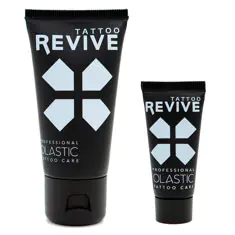
64 items available
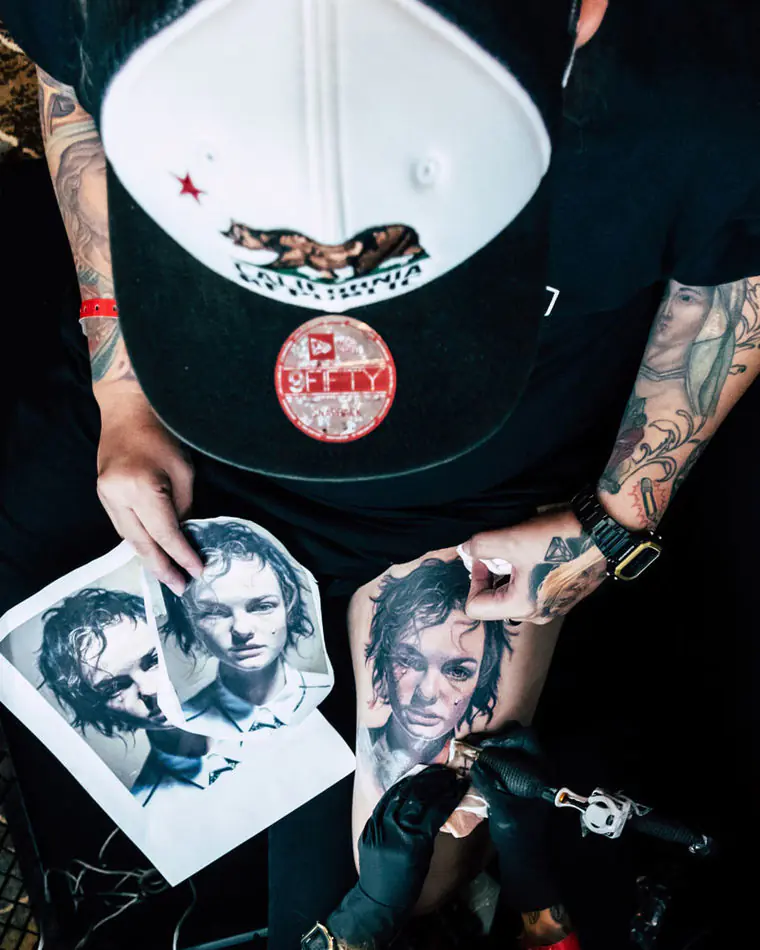
Stage 1. Primary healing
When they tell you: “Healed in 3 days,” they mean primary healing. This stage lasts 3-5 days after the session and is accompanied by discomfort and discharge of ichor.
Depending on the degree of trauma during the tattooing process, this stage can last up to 10 days.
The main rule for caring for any tattoo, regardless of the number of days from the end of the session, is that the tattoo should always be clean and moisturized. From the first day, all discharge should be removed using warm running water and paper towels. When the ichor and paint dry, they form crusts on the surface of the tattoo. They can also form due to increased trauma where the skin is thin. Care for these areas is standard and consists of applying a specialized cream or ointment.
How to use care products:
- Care products during primary healing are applied in a thin layer to avoid diaper rash on the skin.
- Ointment is better for dry skin, and cream for oily and normal skin. Gel is a more average and balanced form.
- It is recommended to reapply every 3-5 hours, depending on how quickly the product is absorbed.
- Apply more often as needed. The skin should not dry out.
- Before re-application, you must wash the tattoo with running water and sulfate-free soap or treat it with a gentle non-alcohol antiseptic.
The above care recommendations apply to both congested areas and areas of the skin where crusts have formed. They cause a little more discomfort and in half the cases remain paler than the overall picture of the work. Improper care can “reward” you with scars instead of a tattoo.
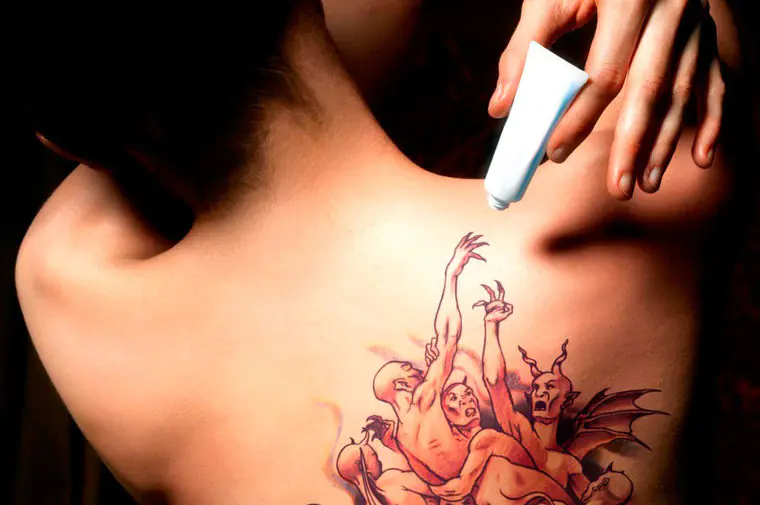
Use of absorbent diapers during primary healing
A fresh tattoo should remain open for as long as possible. However, it is extremely difficult to follow this rule for the entire healing period (you still need to go to work and interact with people). This is where absorbent diapers come to the rescue.
Proper healing with absorbent diapers:
- The diapers prevent the ingress of contaminants from the outside, absorbing with the absorbent side all discharge from the tattoo and healing agents.
- This means that the application of cream/ointment when using a diaper should be 20 - 30% more abundant.
- The diaper does not allow the skin to “breathe,” which can negatively affect healing. Therefore, it should be used only during primary healing and no more than 3-4 times a day for 3 hours.
- Be sure to allow the skin to “rest” for at least 2 hours between changing absorbent compresses and not cover the tattoo with anything.
Correct use will help you overcome the period of primary healing as easily as possible, without constraining yourself in choosing clothing and activity.
Additional convenience when fixing the compress will be provided by the use of a tubular bandage. To hold, but not to press, is the main principle. An incorrectly selected size will increase swelling, as it will impede blood circulation in the limb.
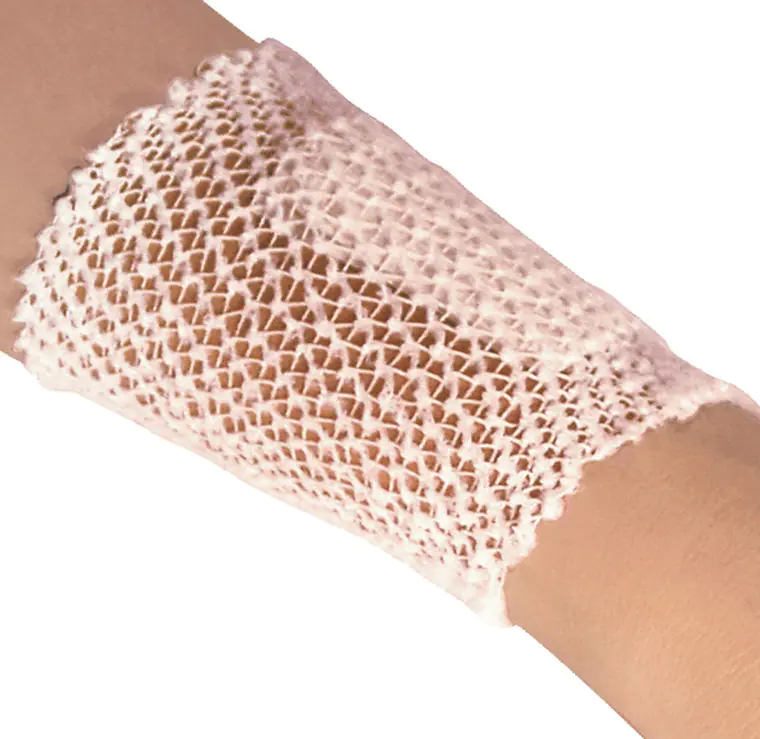
Use of healing films
Healing films such as Dermalize/Unistar/Suprasorb are designed to completely exclude you from the primary healing process.
The film is applied to dried, disinfected skin and remains on it for 4-5 days. It does not allow dirt and bacteria to penetrate from the outside, does not impede air circulation and does not prevent the skin from “breathing”.
Be careful and consult your professional before using this method. It is not suitable for any tattoo technique.
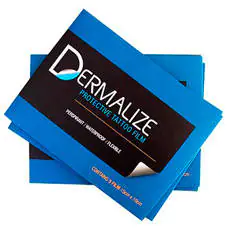
Dermalize Protective – 5pcs
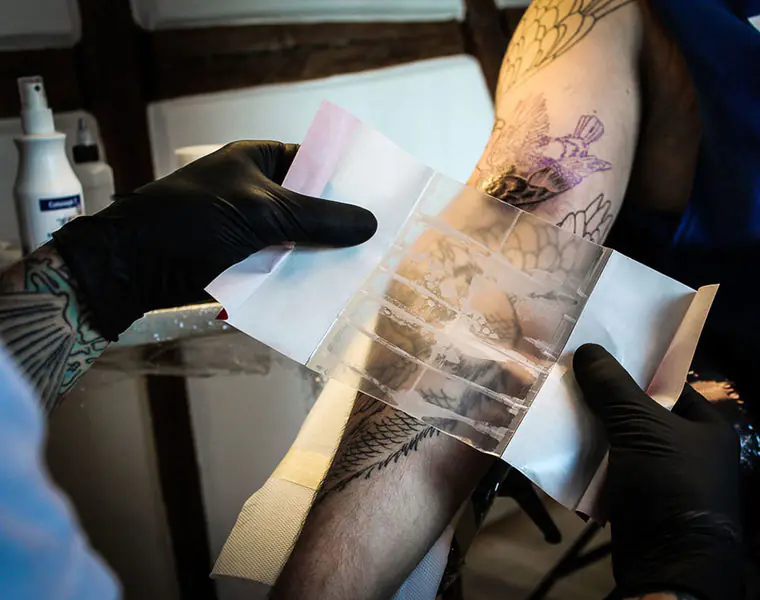
Stage two. Final tattoo healing
It begins when the tattoo no longer hurts and nothing comes out of it. May be accompanied by slight peeling of the skin. The skin on the tattoo begins to shine, and local manifestations of itching are possible.
When using healing films, this is the period after they are removed.
At this stage, the top layer of skin has already recovered and does not allow contamination to pass through, but the work cannot be considered completely healed. If you completely stop caring for the tattoo at the second stage, healing will take up to 2 – 3 months.
At this stage of healing, you will need to continue to moisturize your skin. You can use both specialized creams and other cosmetics with suitable composition. Your task is hygienic care and hydration. Usually it is enough to apply the cream 2-3 times a day. No additional care required.
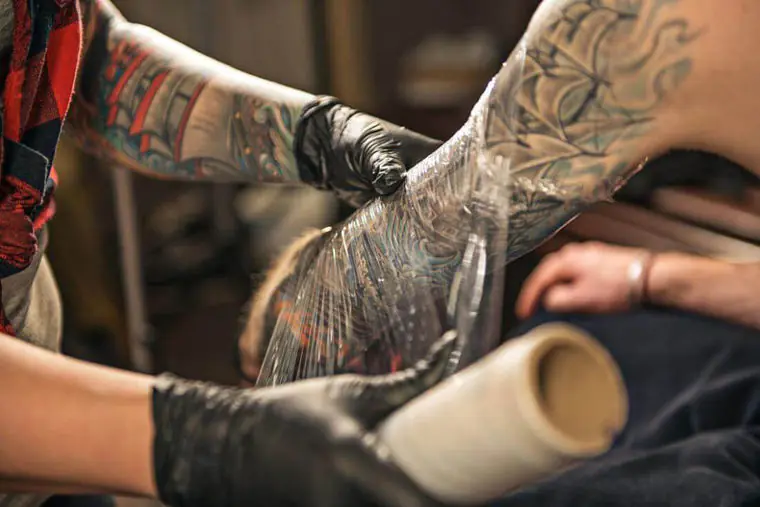
Restrictions on the healing period
Your tattoo is actually a very deep scratch that needs to be carefully looked after and protected from external influences.
Therefore, there are a number of strict restrictions on the healing period:
- During the period of primary healing, it is worth excluding any sports/physical activity, as there is a high chance of further injuring the skin and getting diaper rash due to increased sweating.
- For a month after application, you should avoid baths, saunas, and visiting public bathing areas and open water bodies. In addition to increased sweating, in such establishments there is a high risk of fungal infection, as well as the possibility of thermal and chemical damage to the healing area.
- You should avoid drinking alcohol for 3 to 4 days after application. Increasing pressure will worsen the discharge of ichor, and this may negatively affect healing. Alcohol can also be accompanied by “adventures”, which similarly will not contribute to the rapid regeneration of the epidermis.
- Avoid taking a bath completely. Even if you are in the bathroom, and the place of application is behind its side. It still counts. Limit yourself to a warm shower without using washcloths or scrubs on the site of a fresh tattoo.
- Avoid prolonged exposure to direct sunlight on healing skin.
- Avoid contact of harsh chemicals and cosmetics with damaged skin. This can cause allergies, irritation and chemical damage.
Tattoos do not heal on their own. Be attentive to her, because she will stay with you for life. And even a little longer.
No self-respecting master will let you go after a session without detailed instructions on what part of the actions you need to perform to achieve the best result. Your tattoo is the result of the work of 2 people.
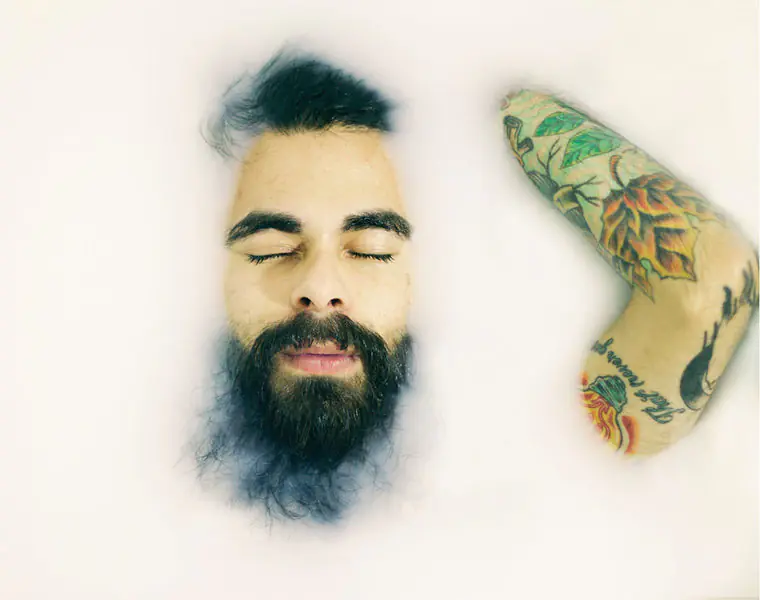
Stage 3. Caring for a healed tattoo
This period begins after complete healing and lasts until the end of life. On tattooed skin, the general condition of the epidermis is much more clearly visible. So be sure to include moisturizers and sunscreen in your beauty routine.
The sun is the main cause of photoaging of the skin and your favorite tattoos. Please be extremely careful when tanning.

And finally, I would like to address the most dangerous misconceptions about tattoo healing:
- Healing with Vaseline and baby cream. Vaseline simply clogs the pores and is not suitable for healing. Baby cream creates an impenetrable environment, which is good for children's skin, but completely unsuitable for adults. The required hydration cannot be achieved. And healing with the help of these means is a doubly pointless undertaking, since specialized drugs are more than available.
- Healing under cling film. Cling film is used only as a primary compress, as it does not allow air to pass through and leads to diaper rash. Also, under it, a favorable environment for the proliferation of bacteria very quickly develops, which leads to the occurrence of dermatitis and a number of skin infections.
- Healing without the use of special means. Simply washing off the ichor without proper moisturizing will lead to dryness and cracking of the skin, which will increase the risk of infections from the outside.
- Healing with budget funds Methyluracil/Spasatel/Eplan or any pharmaceutical drugs. Most pharmaceutical products are specialized and suitable for wounds and burns. That is, they either contain rather aggressive antiseptics or are of an unsuitable consistency for tattooing.
- Vishnevsky ointment and Levomekol only make damaged skin worse, since the first draws out foreign substances, and the second is too oily and anti-inflammatory. Not every cream or ointment is suitable for proper tattoo healing.
- The more often you apply it, the better. Moderation is important in everything. You can heal poorly even with specialized creams and ointments. More and more often does not mean better. Please follow the care instructions and always remember the basic rule - moderate moisture and cleanliness of the healing skin surface.
- If you drink/go to the gym/quickly go to the bathhouse/swim in the pool once, nothing will happen. A healthy human body copes with most skin diseases quite successfully, but we are for the most responsible approach to those things that will remain with us for the rest of our lives. We wish the same for you.
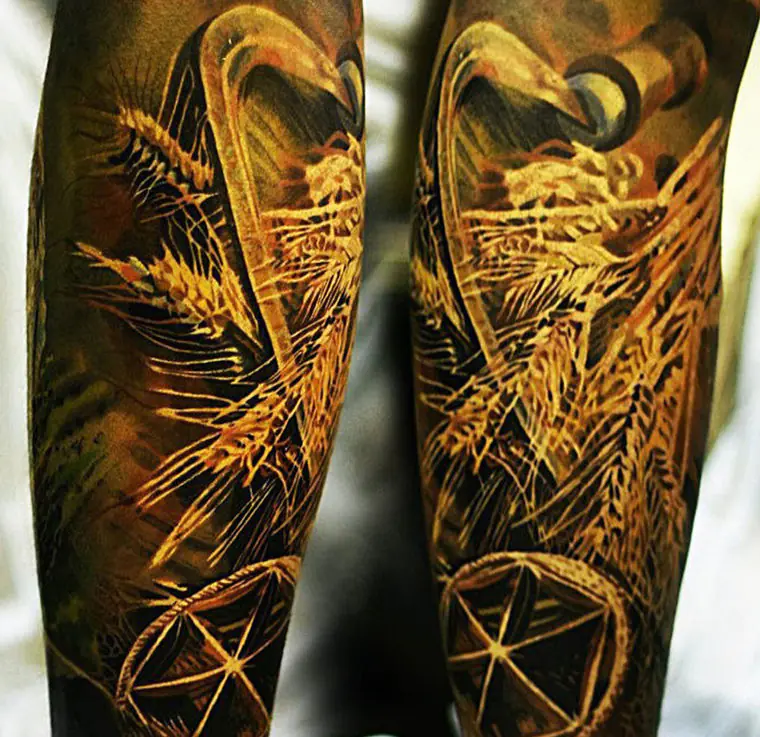
Your tattoo should be the best
Maintain maximum color, avoid corrections, avoid problems with allergies and skin diseases - only proper healing will help. Your tattoo is 50% the result of the artist’s work and, no less, a consequence of your actions after the session.
Be responsible and wear the best tattoos!
Recommendations for healing a tattoo can be obtained from the artist immediately after its application. It is worth understanding that the tattoo will be bright and clear only with proper skin care during this period. It is important to treat this area with creams or ointments and protect the skin from exposure to many harmful factors. If you do not follow some simple rules, you may need additional correction to restore the unclear contour, and in the worst case, treatment of suppuration.
Stages of healing
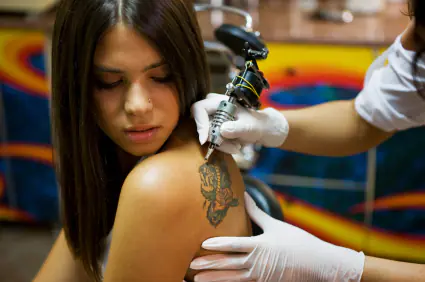
There are several stages in the healing process of a tattoo. Until the skin is completely restored, the pattern may change its appearance. The fact is that a tattoo is not just a wound or damage to the epidermis. Under the layer of cells there is paint, which the body initially perceives as a foreign body. Even if you use good materials, you will have to properly care for your fresh tattoo so that it heals quickly and without complications.
First stage
On the first day after tattooing, intense secretion of ichor occurs. It is a clear or bloody liquid that has the color of ink. Many people are afraid of this process, but in fact, the paint is not washed out from under the skin. There is also inflammation and swelling of the skin around the tattoo site.
The secretion of fluid stops after 1 or 2 days.
Second phase
At the next stage, the ichor is no longer released. During this period the following changes occur:
- the skin becomes tight and dehydrated;
- a dense film is formed on its upper layers;
- Tightness and discomfort may be felt.
These processes occur 2-4 days after the procedure.
It is important not to scratch the skin or pick off the film that begins to form on its surface.
Third stage
At the last stage, 5-9 days after the tattoo is applied, the film begins to peel off and flake off.
Scales and crusts appear on its surface, which should come off on their own, even if the area with the tattoo begins to itch. Detachment of the upper layers of the epithelium is accompanied by slight discoloration of the pattern. This is also considered normal - over time, the pigment is completely absorbed and becomes brighter.
Tattoo healing time
The time it takes for a tattoo to heal varies from person to person and depends on several nuances. After 7-9 days, you can observe complete healing of the tattoo. This occurs when the skin stops flaking and there is no shine on its surface. In areas where there is less subcutaneous fat, the tattoo can take up to 14 days to heal.
However, the skin will fully recover in no less than 20-30 days.
Care instructions
The main thing in caring for a fresh tattoo is not to force its healing. A more expensive way is to purchase a special film, which will reliably protect the tattoo from infection and other factors during the first week. A cheaper method is daily skin treatments.
Immediately after tattooing
When the procedure is completed, the artist covers the tattoo with film. This is necessary because if infection gets into fresh skin lesions, it can fester. Further, the condition of the tattoo will depend only on its owner.
A few hours after the procedure
The film should cover the tattoo for 4-8 hours. After this, it must be carefully removed for the first treatment. If a design is imprinted on it and there is a small amount of paint, do not worry.
Skin care at home will consist of several points:
- remove the ichor, but do not use washcloths or products containing alcohol;
- do not wipe with a towel - you can use a cotton pad or wait until it dries completely;
- apply cream or ointment;
- cover the area with film.
This procedure must be carried out at least twice a day during the first 3 days after the procedure.
If the skin is very dry, it needs to be smeared with moisturizers more often.
If the tattoo doesn't heal
There are several recommendations on what to do if a tattoo does not heal. First, you should make sure that all healing recommendations are followed and the procedures are carried out as scheduled. In addition, the tattoo will not heal if you peel off the scabs in the first few days. If the processes simply pass slowly, and there is no pain or swelling, this may be due to individual characteristics. If you suspect inflammation or suppuration processes, you should consult a dermatologist.
Tattoo healing creams
There are creams and ointments on the market that can be used to care for a fresh tattoo. They are sold in any pharmacy and are intended for wound regeneration. They necessarily contain moisturizing components, as well as anti-inflammatory and antibacterial active ingredients.
- Methyluracil-based ointment is a drug for stimulating regeneration processes. It also has anti-inflammatory activity.
- D-panthenol is a cream based on dexpanthenol. It accelerates wound healing and also moisturizes the deep layers of the dermis.
- Levomekol is one of the most famous drugs for treating wounds. It contains the antibiotic chloramphenicol, which prevents suppuration.
There are also special films on sale for healing tattoos. The instructions for use indicate that such a film is applied for 5-8 days and does not require additional procedures. It protects the skin from water, sun and bacteria.
Contraindications during healing days
During the healing process of the tattoo, you will have to comply with some restrictions, so it is worth considering the timing of its application in advance. There are several rules that the master warns about after the procedure:
- do not visit baths, saunas, solariums and swimming pools, do not sunbathe for 3 weeks;
- Until the tattoo heals, avoid physical activity;
- give up alcoholic beverages and certain medications;
- do not take a bath - only a warm shower, after protecting the tattoo with cream and film.
It is not recommended to get a tattoo in very hot weather.
Skin is especially sensitive to direct sunlight and may cause paint to fade. The summer period is also the most optimal for the development of bacterial infections, which can lead to dangerous consequences.
Signs of complete healing
After 7-10 days you can see that the tattoo has completely healed. The crusts are completely removed, the pattern becomes clear and begins to appear. There is no shine or irritation on the surface of the epidermis. However, skin restoration takes about a month.
Healing a tattoo is a long process that should be approached responsibly. If you do not use moisturizers during regeneration, there is a risk of significantly deteriorating the quality of the drawing. It will then have to be corrected, and the skin will have to be restored again. Among the more dangerous consequences of improper care are suppuration with the development of blood poisoning. In addition, it is worth remembering that a tattoo is a permanent pigment. If its quality deteriorates after application, even with a laser it cannot be completely removed.



